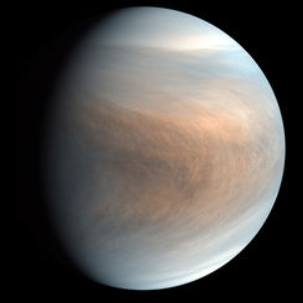Venus gas excites speculation
 Researchers have discovered a tantalising hint that Venus may harbour life.
Researchers have discovered a tantalising hint that Venus may harbour life.
Phosphine gas has been detected in the atmosphere of Venus. On Earth, phosphine is a gas that is produced predominantly by air-breathing lifeforms.
The conditions at the surface of Venus are hostile to life as we know it, but the environment of its upper cloud deck — around 53–62 km above the surface — is temperate.
Over the last few years, experts have detected a spectral signature that is unique to phosphine, and estimated an abundance of 20 parts-per-billion of phosphine in Venus’s clouds.
The authors investigated different ways the phosphine may have been produced, including from sources on the surface of the planet, micrometeorites, lightning, or chemical processes happening within the clouds.
Ultimately, they were unable to determine the source of the trace quantities of phosphine.
The detection of phosphine is not robust evidence for microbial life and mostly indicates potentially unknown geological or chemical processes occurring on Venus.
As cutting-edge research often does, the study gives rise to more new questions than answers.
Experts speculate that, a few billion years ago, Venus was very much Earth-like and thus Venusian life may have thrived in the past. However, it is hard to imagine how such life could have persisted long after Venus experienced run-away heating.








 Print
Print